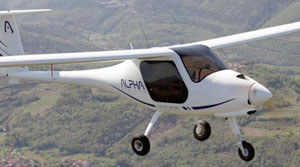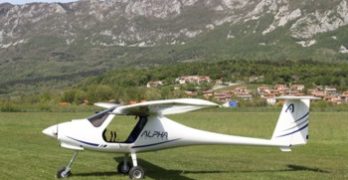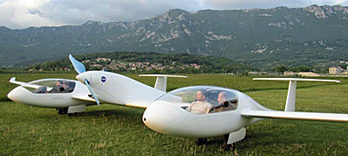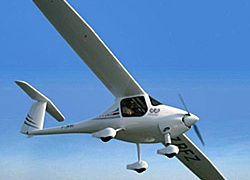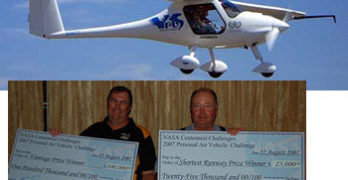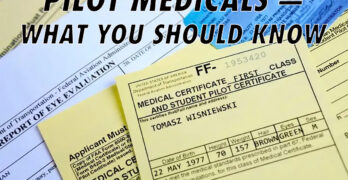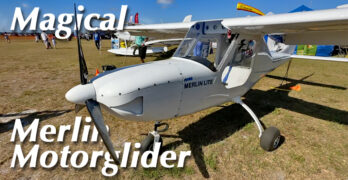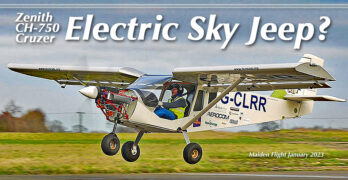Engineers at Pipistrel must not sleep in too often. This company, which won the NASA efficiency challenge several times — in 2011 taking home a $1.35 million cash prize! — just unveiled a full-size version of a sleek four seat design called the Panthera. Now on the other end of the spectrum comes their Alpha Trainer, a reasonably priced LSA model aimed at the flight instruction market. Their range of models is broad running from powered sailplanes to multiple LSA models.
*** “Pipistrel is proud to announce the successful conclusion of the test flights program and the release of our new aircraft, the Alpha Trainer,” announced the company, which operates production facilities in Slovenia and Italy. Developed as a basic military aircraft trainer at the request of certain countries, Alpha is supplied in nosewheel-only configuration, part of a slate of decisions to hold down the price.
Search Results for : Pipistrel
Not finding exactly what you expected? Try our advanced search option.
Select a manufacturer to go straight to all our content about that manufacturer.
Select an aircraft model to go straight to all our content about that model.
Pipistrel Comes Through Again
Just a few short months ago I posted an announcement from Pipistrel about its upcoming, mid-$80K ALPHA Trainer, targeted for flight schools and already bought in significant quantities by the Indian Air Force as a military primary trainer. *** ALPHA was promised for April, and Pipistrel nailed it – how often do we see that in manufacturing?Pipistrel is the same progressive Slovenian company that won the CAFE electric flight competition last year with the Taurus Electro G4 and has gained a growing reputation in the sport aviation industry for innovative, high-performing, highly efficient aircraft such as the Virus and Sinus S-LSA.After keeping its promise to debut the ALPHA in April at the European AERO show, word comes from Ivo Boscarol and company of the successful conclusion of flight testing. The ALPHA is now in production. *** The original concept was to create a do-it-all trainer that would garner substantial orders, enabling mass production economies of scale that would keep costs affordable for everyone.
Pipistrel’s Twin Taurus… Could They Win Again?
Question: What looks like two motorgliders flying in really tight formation sharing an engine… er, a motor, literally between them? Can this Burt Rutan-looking aircraft (photo) win the big dough? And I mean seriously big money with a purse of $1,650,000! *** Called the Pipistrel Taurus G4, the prize-seeking aircraft rolled out of the Pipistrel factory in Slovenia for the first time recently. After posing briefly for the camera, G4 taxied away quietly under electric power for the start of the flight testing program. *** Pipistrel previously won a big NASA check with their Virus SW but the company has now taken a wholly different approach, based on rules which give seat-mile advantage to four seater models. *** “This aircraft is the first four-place electric aircraft to be flown in the world,” stated Pipistrel. Their Taurus Electro claimed to be the first two-place electric aircraft to be flown in the world four years earlier.
Triple Play: Pipistrel Wins SLSA Approvals
After a pause in new SLSA, Pipistrel burst onto the scene with multiple approvals, three at once reports Michael Coates, the importer for Pipistrel USA. We raced to get these placed on the SLSA List because it’s news, but also because FAA uses this list to verify new models before assigning them N-numbers. FAA Registration Branch checks to make sure company names and other info matches incoming applications; we had three calls last week from producers who requested minor changes to our SLSA List after the agency raised questions. *** Now that list swells to 118 models. Pipistrel, which makes long-winged models that soar well, got the Virus approved in both airplane and glider categories, no small achievement. They also gained approval for their Taurus motorglider. The Slovenian company — with production facilities in nearby Italy (partly an effort to adhere to the U.S. government’s bilateral agreement requirement… dull, yes, but important legally) — has been in the news for their electric airplanes and has announced a supersleek four seater, the Panthera.
Money from the Sky; Pipistrel Wins Big!
We’ve all heard the line: To make a small fortune in aviation, start with a big one. Yet thanks to Comparative Aircraft Flight Efficiency (CAFE) Foundation and NASA, the laws of gravity seem reversed. A Pipistrel Virus (say: “VeerUs”) went home from the Personal Air Vehicle (PAV) Challenge event with four checks totaling (are you ready for this!?): $160,000. The money represents the biggest share of $250,000 awared for this first year of five contest seasons. Australian pilot and LSA businessman Michael Coates flew a modified version of the Pipistrel Virus owned by Vance Turner (photo, on right) of Rescue, California. Lots more details are available; read the rest of the story. *** Virus, sibling of the motorglider Sinus. (“SeenUs”), took the best overall prize ($100,000); efficiency ($25,000); short runway ($25,000); and second place in the top speed prize ($10,000).
FAA Medical Certificates — What Every Pilot Should Know (UPDATED)
For most pilots, the FAA Airmen’s Medical Certificate is a fundamental requirement for flight. This certification guarantees that the pilot meets the medical standards necessary for safe operation of an aircraft. But there are exceptions, and understanding them is crucial, particularly for pilots facing challenges with their medical certification.
Medical Qualifications: Contention and Controversy
Discussions about medical qualifications often lead to disagreements and controversy. Even though I am not a member of the FAA FAASTeam, I regularly attend WINGS seminars. These discussions consistently arise at the end of many presentations, regardless of whether the presentation is related to medical issues.
The typical statement is usually something this: “A Sport Pilot does NOT need an FAA Medical NOR BasicMed.” They are usually referring to the to the use of a U.S. Issued Driver’s License to exercise Sport Pilot privileges. While this is true at a surface level, the answer is more nuanced and not for the reasons many pilots mistakenly believe.
New Buyer for Icon Reported — What Happens Now?
Icon is a global enterprise. While its headquarters remains in Vacaville, California, fabrication is done in Mexico, and ownership is in China. For some years, this American start-up has benefitted from Chinese investment.
How much investment has this California company attracted? Numbers I’ve been quoted vary enormously but all estimates run into many millions of dollars. If these guesses are even close to accurate, Icon has generated more investment funding than nearly any LSA producer. Only one outstrips them. That was a reported $200 million sale of Pipistrel to Textron, owner of Cessna and other aviation brands. I hope the aerospace conglomerate got all they hoped for because that is a super-premium valuation for any LSA company, even one as tech-savvy as Pipistrel.
Icon has performed reasonably well in recent years (“200 Delivered” report) but prior investments in the company require sales volumes that are difficult to reach, especially with a $400,000 price tag.
Light Sport Accidents — New LSAs vs. Legacy Trainers
Editor’s Note: This is the second part of Ron Wanttaja’s survey of LSA safety (here’s the first). This time, he takes a close look at how modern LSAs compare with legacy trainers as epitomized by Cessna’s 152, both in terms of accident rates and the kinds of mayhem they succumb to. Let’s dive in!
In the previous safety review, we looked various forms of LSA—SLSA, ELSA and Experimental/Amateur-Built. For this article, we’ll look only at SLSA airplanes. We’re not addressing powered parachutes, weight shift or other SLSA classes—just traditional flying machines with wings and a motor. Call them “SLSA-A,” or “SLSA-As” for plural. We’ll address their accidents from 2005 through 2021.
To identify the SLSA-A accidents, I cross-referenced the NTSB accident database with FAA registrations, including both active and inactive aircraft.
What to compare them to? Let’s pick the near-ubiquitous Cessna 152. It’s close to the general definition of Light Sport, other than exceeding the LSA gross weight requirement.
Magical Merlin Motorglider Goes Both Ways: Part 103 or Motorglider; Gas or Electric
Regular readers know I have closely followed the Merlin developments. I use plural because developer Chip Erwin has steadily built this single seat flying machine into a whole fleet of its own. At Sun ‘n Fun we saw a display of three airplanes in different variations.
Let’s begin with a focus on the modest cost of Merlin. I promote affordable aviation all day long. That word “affordable” means something different to every single pilot so every time I use the word someone is going to tell me, “It’s still too expensive.”
Look I get it. I’m a consumer, too. Plus, who doesn’t enjoy a deal? So here’s the short answer: “Finished Price: $34,000.” That’s a direct quote from Aeromarine-LSA. I know some may say that doesn’t work for them but in this day and age, that is a bargain for a ready-to-fly aircraft. When that buys an airplane built like Merlin Lite, one equipped the way Chip has configured it, I consider that one of the great values in aviation.
Should Your Out-Back, Off-Airport “Sky Jeep” Go Electric? Here’s One Answer…
Zenith’s headline read: “All-electric Zenith ‘Sky Jeep’ completes first flight, with plans to transport doctors and medical supplies in remote areas of the world.” Several aviation publishers jumped on the news* from light kit-built market leader, Zenith Aircraft.
I’m curious what you think of (1) electric propulsion on any aircraft and (2) electric power for an aircraft used, let’s say, for exploring. If you have an opinion and care to share it, use the comment feature.
To date, most electric-propulsion entries have been sleeker designs. Pipistrel has been a leader in this class; they got their start building sailplanes and motorgliders and never lost their preference for clean, smooth shapes. Many others also participated (nearby images).
Bye Aerospace’s eFlyer continues its long path toward the market. This development company based its aircraft on Arion’s Lightning airframe, a smart choice as Lightning is so smoothly constructed. This article describes what was then called Sun Flyer.
- « Previous Page
- 1
- 2
- 3
- 4
- 5
- …
- 15
- Next Page »


